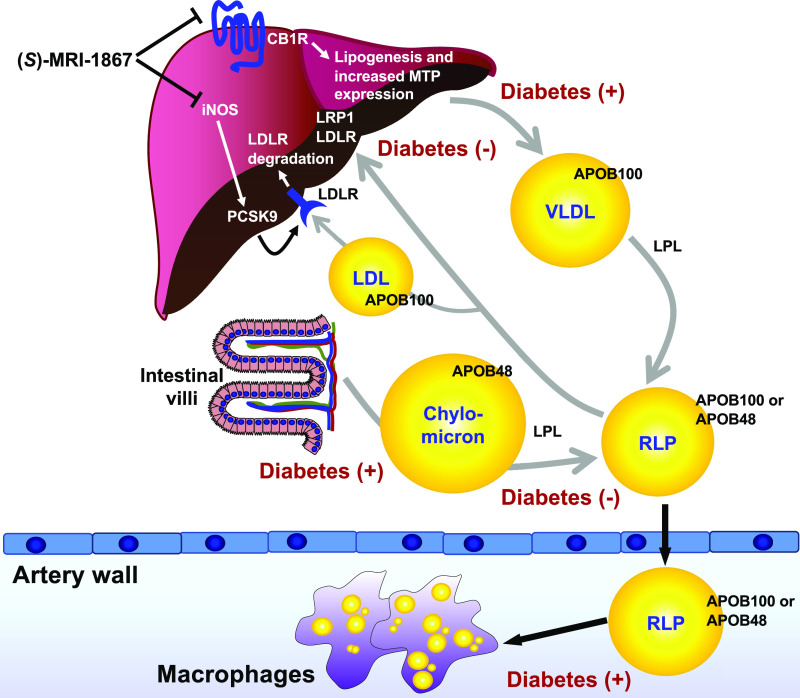Figure 1.
Diabetes is associated with elevated levels of triglyceride-rich lipoproteins, an effect that might be mitigated by a dual CB1R/iNOS inhibitor. Increased plasma levels of TRLs in T2D can be due to the increased hepatic production of APOB100-containing VLDL, increased intestinal secretion of APOB48, reduced lipolysis of TRLs by LPL, and reduced hepatic clearance of TRLs and their RLPs. A prolonged elevation of RLPs in circulation likely leads to increased trapping of these highly atherogenic particles in the artery wall, where they are taken up by macrophages and are believed to contribute to atherogenesis. The dual CB1R/iNOS inhibitor (S)-MRI-1867 reduces hepatic secretion of VLDL through inhibiting CB1R-mediated MTP expression and reduces PCSK9 expression and subsequently increases LDL receptor expression via iNOS inhibition. The figure was reproduced and modified from Chait et al. (4), with permission of Diabetes.

